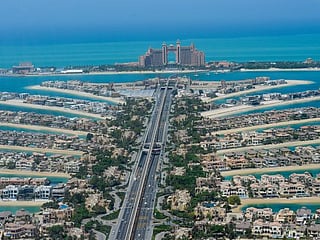UAE’s strong economy supports banking sector outlook
UAE banks' asset-quality indicators will continue to deteriorate in the next 12-24 months

Dubai: The UAE has a wealthy economy with strong fiscal and external positions that supports the fundamentals of its baking sector, according to rating agency Standard & Poor’s.
The COVID-19 pandemic, lower oil prices, and continued pressure on the real estate sector have increased risks for UAE banks with a significant spike in non-performing loans, which S&P expect will increase further once the regulatory forbearance measures are lifted, impacting the profitability for longer.
“Although UAE banks traditionally operate with healthy profitability metrics, low interest rates have negative consequences for bank margins. We therefore expect the banking sector's profitability will remain lower for longer,” said Puneet Tuli, an analyst at S&P.
After the pandemic started, the UAE Central Bank (CBUAE) implemented a Targeted Economic Support Scheme (TESS), which helped ease the pressure on corporate issuers and small and midsize enterprises. However, the scheme did not reduce credit risk on the banking system's balance sheet. The scheme included a provision that allows banks not to classify deferred exposures as Stage 2 and Stage 3 [under the IFRS 9]. Rather, banks have classified deferrals into two groups: Group 1 (exposures to clients that are temporarily and mildly impacted); and Group 2 (exposures to clients that are significantly impacted and could see potential stage migrations) and disclosed the information.
At year-end 2020, 12 per cent of the top 10 banks' exposures were classified as Group 1 and 2 per cent as Group 2. UAE banks enjoy a good funding profile.
Strong funding profile
Public sector and government depositors provide more than 30 per cent of resident deposits. S&P expects these entities to withdraw some deposits in 2021 but do not see any immediate liquidity challenges for banks.
S&P views the trend in economic risk in the UAE as stable.
“We expect the residential real estate sector will remain under pressure for at least another year because of continuous oversupply, while demand-driven weaknesses will hamper the tourism, hospitality, and aviation sectors, as well as some trading sectors. We therefore expect UAE banks' asset-quality indicators will continue to deteriorate in the next 12-24 months,” Mohamed Damak, senior director, financial services at S&P Global Ratings.
Banks in general are seen able to navigate the ongoing macroeconomic challenges, owing to their strong capital buffers and good profitability despite the sharp increase in cost of risk and lower interest rates.
S&P Global Ratings classifies the banking sector of the United Arab Emirates (UAE) in group '5' under its Banking Industry Country Risk Assessment (BICRA). Other countries in group '5' are Bermuda, Hungary, Iceland, Italy, Malta, Mexico, Panama, Peru, Philippines, and Qatar.
Strengths and weaknesses of UAE banks
Strengths • High-income levels and strong fiscal and external position. • Relatively more diversified economy than that of Gulf Cooperation Council (GCC) peers. • Funding profile dominated by stable core deposits. Weaknesses • Weakening of asset quality and significant exposure to risky sectors. • Still fragmented banking sector with high price competition. • High sector and single-name concentrations.
Sign up for the Daily Briefing
Get the latest news and updates straight to your inbox









